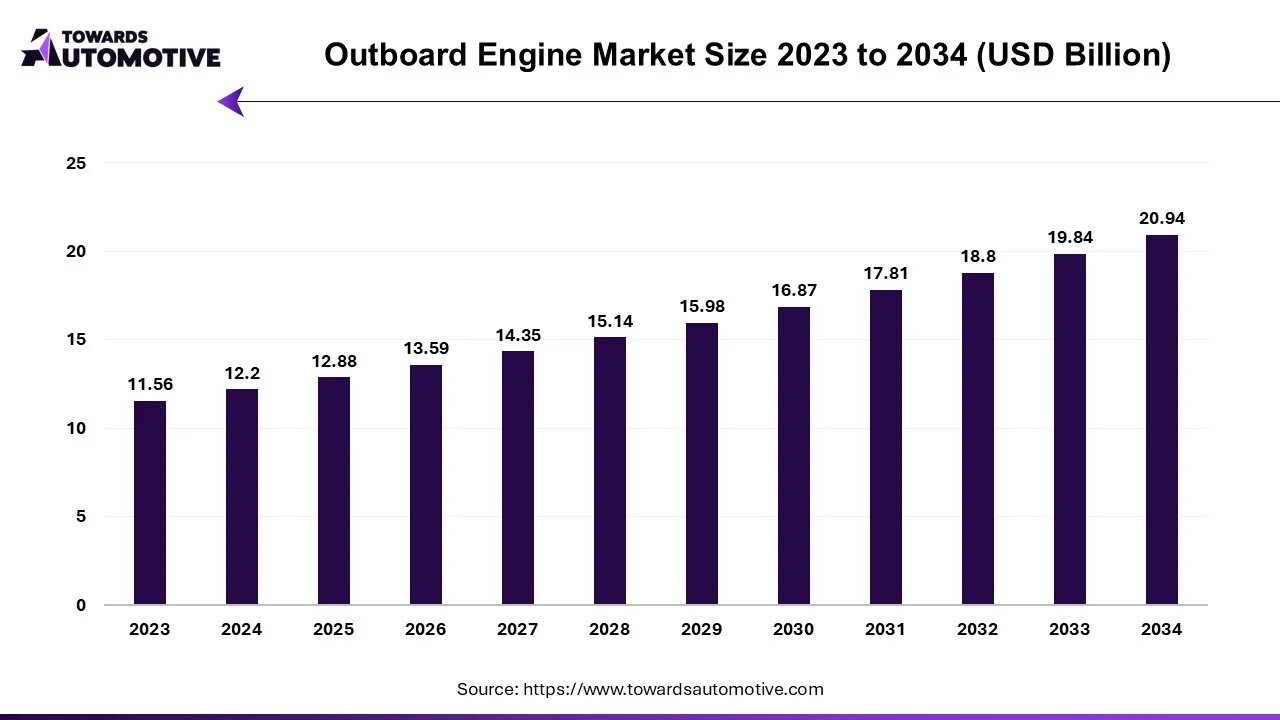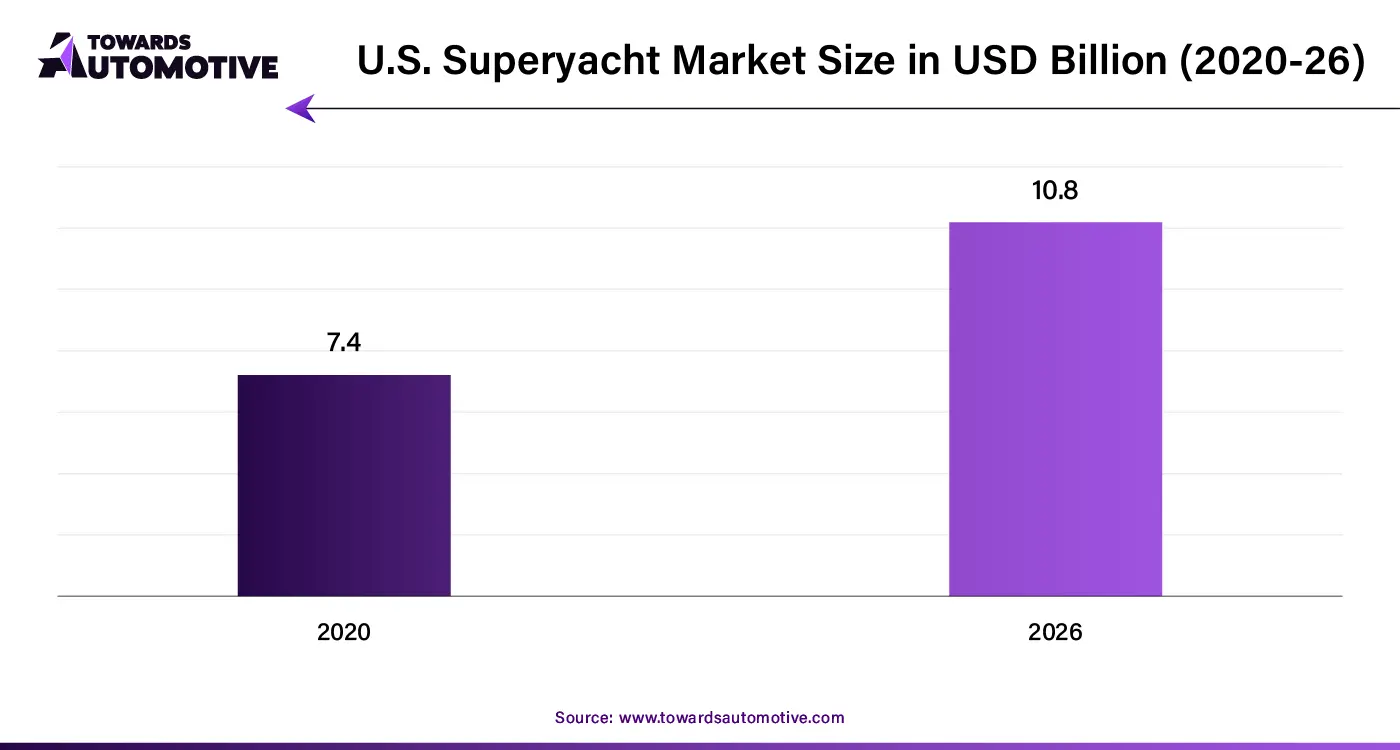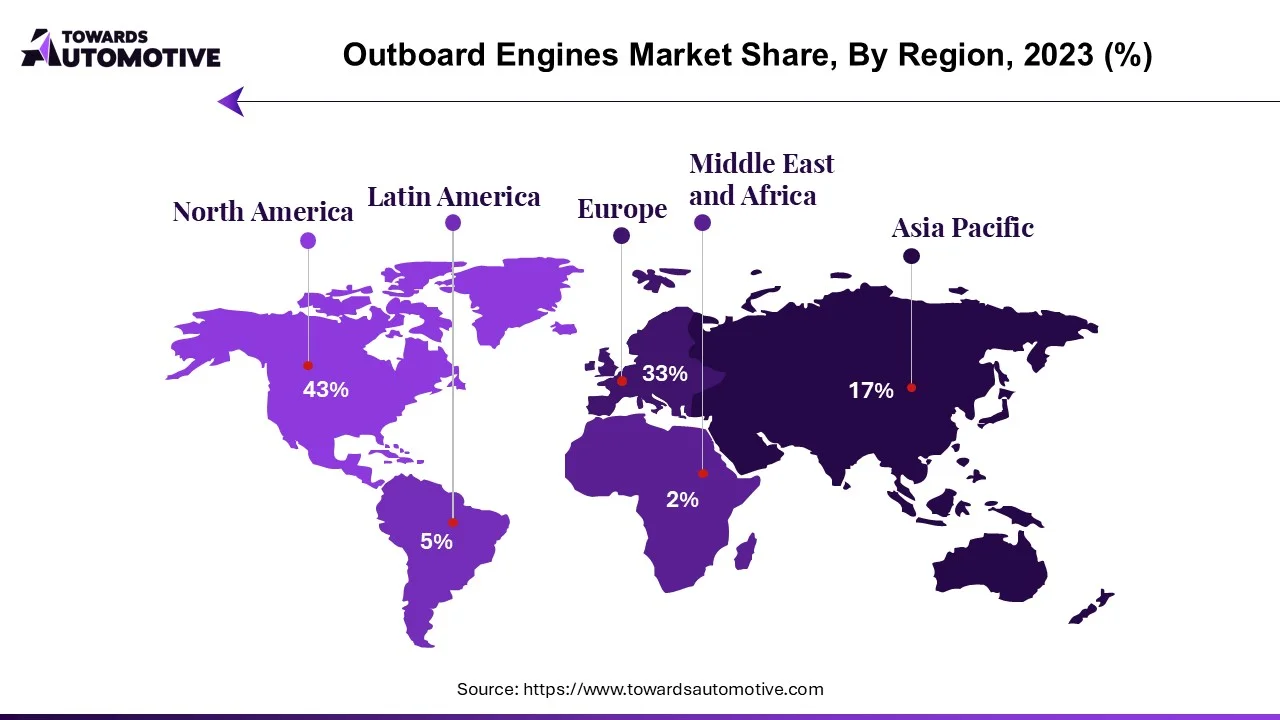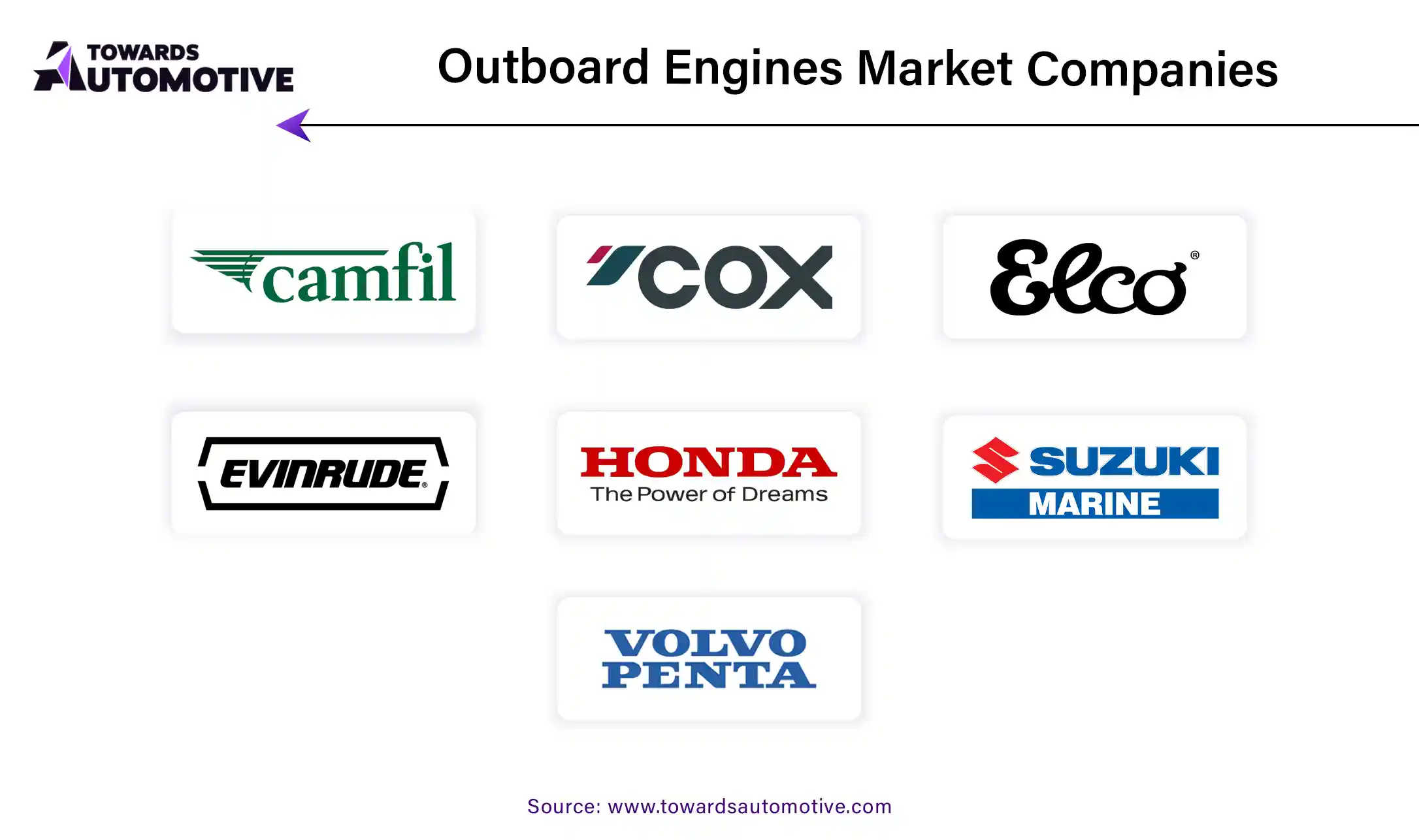April 2025
The outboard engines market size is calculated at USD 12.2 billion in 2024 and is anticipated to reach around USD 20.94 billion by 2034, growing at a CAGR of 5.55% from 2025 to 2034.

Unlock Infinite Advantages: Subscribe to Annual Membership
The onboard engines market plays a crucial role in the global transportation and maritime industries, powering vessels across various sectors, including commercial shipping, recreational boating, and naval operations. Onboard engines are essential for propulsion, power generation, and the overall functioning of different types of vessels, including cargo ships, tankers, ferries, yachts, and military vessels. With technological advancements, onboard engines have become more efficient, environmentally friendly, and versatile, offering various fuel options such as diesel, gas, and hybrid systems to meet the growing demand for sustainable marine transportation.
The market for onboard engines is driven by the rising demand for shipping and logistics, increasing global trade, and the expansion of the leisure boating sector. In addition, growing regulatory pressures to reduce emissions and improve fuel efficiency are pushing manufacturers to develop innovative engine solutions that adhere to stricter environmental standards. The need for engines that provide reliable performance while ensuring low fuel consumption and reduced environmental impact is a significant factor influencing the market’s growth.
Furthermore, the integration of digital technologies in onboard engines, such as smart monitoring systems and advanced control mechanisms, is enhancing operational efficiency and vessel safety. These innovations enable better engine performance, reduce maintenance costs, and improve fleet management. As the demand for faster, more efficient, and eco-friendly marine transport continues to rise, the onboard engines market is poised for significant growth, driven by technological advancements and evolving market needs across various sectors.
Artificial Intelligence (AI) plays an increasingly vital role in the onboard engines market, offering advancements that improve engine performance, safety, and efficiency. One of the key applications of AI in this market is predictive maintenance. By analyzing data from onboard sensors and historical performance metrics, AI can predict when engine components are likely to fail or require maintenance, reducing downtime and costly repairs. This predictive capability helps optimize maintenance schedules and ensures engines are operating at their peak efficiency, leading to cost savings for operators.
AI also enhances fuel efficiency and operational performance through smart control systems. These AI-driven systems can dynamically adjust engine parameters based on real-time conditions, such as load, weather, and fuel type, ensuring optimal fuel consumption and reducing emissions. This is particularly important in the context of stricter environmental regulations and the push for greener, more sustainable maritime transportation.
Additionally, AI enables better fleet management by using data analytics and machine learning algorithms to monitor and optimize the performance of entire fleets of vessels. This data-driven approach helps operators streamline logistics, reduce fuel consumption, and improve overall operational efficiency.
Finally, AI-powered systems can contribute to autonomous vessels, where AI can manage various aspects of navigation and engine control, reducing the need for human intervention and increasing safety. As these technologies continue to evolve, AI is expected to play an even more significant role in shaping the future of the onboard engines market, driving innovation and improving operational outcomes across the maritime industry.
Rising sales of yachts are a significant driver of growth in the onboard engines market, particularly in the luxury and recreational boating sectors. As disposable incomes rise and consumer interest in leisure activities such as yachting continues to increase, the demand for high-performance onboard engines is expanding. Yachts, which are often powered by advanced onboard engines, require powerful, efficient, and reliable propulsion systems to ensure smooth performance, long-range travel, and exceptional fuel efficiency. As yacht owners seek enhanced experiences, engine manufacturers are developing cutting-edge propulsion technologies to meet the growing demands for luxury, sustainability, and performance.
In addition, the increasing popularity of eco-friendly yachts is driving a shift toward more sustainable onboard engine solutions. Many yacht buyers now prefer engines with lower emissions, better fuel efficiency, and quieter operations, which aligns with growing environmental concerns and regulations. Electric and hybrid onboard engines are gaining traction in the yacht market due to their reduced environmental impact and compliance with stringent maritime regulations.
Moreover, yacht manufacturers are incorporating advanced onboard engines to provide higher power outputs, better handling, and enhanced fuel efficiency for long voyages. The rise in custom-built yachts, which often come with high-tech onboard propulsion systems tailored to specific needs, further fuels demand in the market. As the yacht market continues to grow and evolve, the onboard engines market will see significant innovation, creating opportunities for manufacturers to develop more advanced, efficient, and sustainable propulsion solutions.

The onboard engines market faces several restraints, including the high cost of advanced engine technologies and the complex regulatory requirements surrounding emissions and fuel efficiency. Additionally, the significant environmental impact of traditional internal combustion engines, coupled with the slow adoption of cleaner technologies, poses challenges. Limited availability of charging infrastructure for electric-powered vessels and high maintenance costs for complex engine systems also hinder market growth. These factors can restrict the widespread adoption of new, sustainable propulsion technologies in the onboard engines market.
Hydrogen-powered engines present significant opportunities in the onboard engines market, particularly as the maritime industry seeks more sustainable and eco-friendly alternatives to traditional fossil fuel-powered engines. As governments and organizations implement stricter emission regulations to reduce carbon footprints, hydrogen offers a clean solution for marine propulsion, emitting only water vapor as a byproduct, making it an attractive option for environmentally conscious stakeholders. Hydrogen-powered engines are poised to drive innovation in the onboard engines market by addressing the growing need for zero-emission alternatives in commercial shipping, leisure boating, and even naval vessels.
The development of hydrogen infrastructure, including refueling stations and fuel cell technologies, further supports the growth of hydrogen-powered engines. With advancements in fuel cell systems and hydrogen storage solutions, these engines are becoming more viable for long-distance, high-power applications, making them suitable for larger vessels and cargo ships. Moreover, hydrogen engines offer advantages such as reduced reliance on traditional marine fuels, lower operational costs, and longer operational lifespans compared to some other clean technologies.
In addition, hydrogen-powered engines can enhance the energy efficiency of vessels, enabling them to maintain higher speeds and operational reliability with reduced environmental impact. The increasing investments from both private and public sectors in hydrogen research, alongside growing collaboration between energy providers and engine manufacturers, creates a favorable market environment. As the technology evolves and infrastructure expands, hydrogen-powered engines are expected to play a transformative role in shaping the future of the onboard engines market.
The 2-stroke segment held a dominant share of the market. The 2-stroke engine segment plays a significant role in driving the growth of the onboard engines market, particularly within the maritime and recreational boating sectors. Known for their simplicity, compact design, and higher power output relative to engine size, 2-stroke engines are a popular choice for smaller vessels and applications where space and weight are critical considerations. These engines offer an efficient solution for short trips, high-performance vessels, and a wide range of watercraft, including fishing boats, personal watercraft, and speedboats.
One of the key drivers of the growth of the 2-stroke engine segment is its ability to deliver superior power output with fewer components, making them easier to maintain and repair. This is particularly appealing for boat owners and operators who require engines that are both reliable and cost-effective. Additionally, the 2-stroke engine's performance in terms of acceleration and power-to-weight ratio makes it a preferred option for high-speed and performance-driven vessels.
Moreover, advancements in technology are helping to overcome traditional environmental concerns associated with 2-stroke engines. Modern 2-stroke engines are being designed with improved fuel efficiency and reduced emissions, making them more compliant with increasingly stringent environmental regulations. Innovations like direct fuel injection (DFI) and electronic control systems enhance their fuel consumption rates and minimize pollutants, addressing the growing demand for greener and more sustainable marine propulsion solutions. As a result, the 2-stroke engine segment is set to continue playing a vital role in the onboard engines market, driving growth across various maritime industries.
The electric segment led the industry. The electric segment is rapidly driving the growth of the onboard engines market, as the maritime industry increasingly adopts electric propulsion systems to meet sustainability goals and reduce environmental impact. Electric onboard engines offer significant advantages, including zero emissions during operation, lower fuel costs, and reduced noise pollution. This is particularly attractive in regions with strict emissions regulations and in recreational boating sectors, where eco-friendly and quiet operation is a key selling point. Electric engines are becoming a popular choice for smaller vessels, such as ferries, yachts, and leisure boats, where the demand for cleaner and more energy-efficient power sources is rising.
Technological advancements in battery technology and energy storage solutions are further fueling the growth of the electric onboard engine segment. The development of high-capacity, fast-charging batteries with longer life cycles and shorter charging times has made electric propulsion more viable for larger vessels and longer trips. Additionally, electric systems provide superior reliability with fewer moving parts, leading to lower maintenance costs and longer operational lifespans compared to traditional internal combustion engines.
Another factor driving the electric segment’s growth is the increasing focus on reducing carbon emissions in the shipping and maritime industries. Governments and regulatory bodies are incentivizing the transition to electric propulsion through subsidies, tax breaks, and stricter environmental standards. The expanding infrastructure for charging electric vessels at ports further supports the adoption of electric onboard engines. As technological innovations continue to improve battery efficiency and electric propulsion systems, the electric segment is expected to become a dominant force in the onboard engines market, fostering sustainable growth in the industry.

North America dominated the outboard engines market. Several key drivers are contributing to the growth of the outboard engines market in North America. One of the primary factors is the increasing popularity of recreational boating and water sports. As more consumers engage in activities such as fishing, waterskiing, and recreational cruising, the demand for outboard engines, which offer portability, ease of use, and reliability, continues to rise. Outboard engines are favored for smaller boats, particularly in recreational and sport boating segments, which is expanding due to a growing interest in outdoor leisure activities.
Another driver is the shift toward more environmentally friendly solutions. With increasing environmental awareness and stricter emissions regulations, there is a growing demand for clean and fuel-efficient outboard engines. Manufacturers are responding by developing engines with lower emissions, better fuel economy, and enhanced performance. The rise of electric outboard engines, which provide quieter, zero-emission alternatives to traditional internal combustion engines, is also contributing to this trend, appealing to environmentally-conscious consumers and businesses alike.
Technological innovations, such as digital controls, improved fuel injection systems, and advancements in engine design, are further fueling the growth of the outboard engines market in North America. These innovations enhance the reliability, performance, and efficiency of outboard engines, making them more attractive to consumers.
Lastly, the increasing number of boat manufacturers offering outboard-powered vessels, along with greater availability of aftermarket services, is expanding the market. The robust support infrastructure and growing demand for versatile, efficient propulsion systems in the region are key drivers for continued growth in the North American outboard engines market.
Asia Pacific is expected to grow with the highest CAGR during the forecast period. The outboard engines market in the Asia Pacific (APAC) region is experiencing significant growth driven by several factors. One of the primary drivers is the increasing demand for adventure boating and water sports, especially in countries such as Japan, Australia, and Thailand. With a growing middle class and rising disposable incomes, more consumers are investing in leisure activities such as fishing, boating, and watersports.
Additionally, the rapid development of coastal and maritime tourism in APAC is driving the demand for outboard engines. Many countries in the region are investing in their maritime infrastructure, which includes recreational harbors, marine resorts, and boating facilities. As a result, there is a growing need for outboard-powered vessels in these areas, contributing to market expansion.
The rising popularity of small to medium-sized boats is another important driver. Outboard engines are ideal for smaller, more cost-effective boats, which are gaining traction in the region due to their affordability and versatility. These engines are particularly favored in fishing communities, where they provide an efficient, reliable, and economical power source for fishing boats operating in shallow waters.
Environmental concerns are also playing a significant role in the market's growth. APAC countries are increasingly adopting environmentally friendly technologies, with manufacturers developing low-emission and fuel-efficient outboard engines. The introduction of electric outboard engines, which offer quieter and cleaner alternatives to traditional gas-powered engines, is further driving demand as consumers and businesses prioritize sustainability.

By Engine Type
By Ignition Type
By Fuel Type
By Application
By Region
April 2025
April 2025
April 2025
April 2025
We offer automotive expertise for market projections and customizable research, adaptable to diverse strategic approaches.
Contact Us